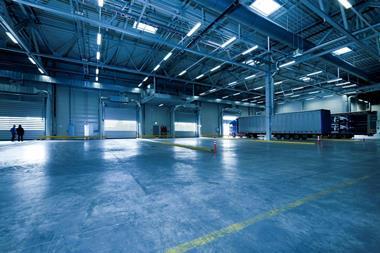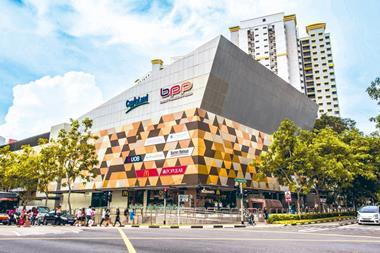The 2010 football World Cup will generate new infrastructure and boost sentiment in South Africa. But rising inflation and interest rates as well as political uncertainties continue to worry investors. Lynn Strongin Dodds reports
Sub-prime loans have not been a feature of the South African property market but the country is feeling the brunt of the crisis. Liquidity is down sharply and transactions have ground to a halt as the global economy continues to slow down. Returns will certainly be off last year's highs, but the republic's performance will still look relatively healthy compared with many of its more developed peers.
Gary Hardisty, joint fund manager at Old Mutual Investment Group Property Investments, one of South Africa's largest real estate investors, notes: "The credit crunch has definitely had an impact although the country has not been materially affected by sub-prime loans. We have been hit by the general negative sentiment of lenders and investors towards property. There have not been any deals the size of the $1bn (€680m) V&A property deal, but instead smaller transactions up to R500m (€43.9m)."
The V&A deal made the headlines last year not only for its sheer size but also because it was the first significant property transaction by a foreign investor. The mixed-use development, which is located near Cape Town's central business district, was bought by Istithmar (the private equity arm of government-owned Dubai World) and UK-based London and Regional Properties, along with a local black empowerment group.
According to Colin Young, head of institutional property investments at Old Mutual's Investment Group Property Investment's Triangle Real Estate Development Funds, Middle Eastern sovereign funds continue to be the most active players. In many countries, though, including the UK, institutions have taken a flight to cash. The current global situation has stymied interest but there are also concerns over domestic issues. These include the upcoming elections next June as well as the electricity shortages that gripped the country in early January, halting production at its main gold, diamond and platinum mines. The economy slowed to a 6.5-year low of 2.1% growth in the first quarter although it rebounded in the second quarter to 4.9%.
John Loos, property strategist at First National Bank of South Africa, notes: "There is no doubt that the electricity shortages created negative sentiment but it seems that ESKOM (South Africa's electricity utility) is trying to rectify the situation and we have returned to a normal semblance of operation. The first non-operational power station should come back in operation this year and there are two new coal-fired power stations that are expected to be built by 2012."
As for the elections, there are questions about African National Congress leader Jacob Zuma, who is expected to succeed president Thabo Mbeki. Three years ago, Zuma was sacked as South Africa's deputy president when his financial adviser, Schabir Shaik, was found guilty of soliciting a bribe on behalf of Zuma and jailed for 15 years in connection with an arms deal. Zuma then went on trial. However, the case collapsed in 2006 when the prosecution said it was not ready to proceed. Zuma was charged again last December with corruption, money-laundering and racketeering in connection with an arms deal. High court judge Chris Nicholson recently set 12 September as the ruling date to determine whether Zuma's trial will go ahead. His legal team has argued that the postponements in bringing the case to court could compromise Zuma receiving a fair trial.
Ideally, the defence counsel would like to delay the trial until afer next year's parliamentary and provincial elections. If they are unsuccessful, ANC deputy president Kgalema Motlanth has been mentioned as a possible candidate to replace Zuma. The problem is the uncertainty surrounding the situation, which never goes down well with investors. As one market observer notes: "Either Zuma will be president or in jail. The ANC will try everything in its power for him not to get arrested but that does not paint a positive picture of the country for overseas investors."
In the meantime, property experts are optimistic about the industry's growth prospects, despite this year's performance coming in below 2007's lofty levels. Stan Garrun, managing director of IPD South Africa, adds, "The credit crunch has begun to bite and there is no doubt that the mood has turned bearish. It is tied to the perception of risk that has affected all property markets although the long-term fundamentals in South Africa are still strong. Residential and retail sectors have been the worst affected but industrial and commercial properties are holding up well."
According to Niel Harmse, research analyst at IPD South Africa, the 2007 returns were marginally above 2006's overall property return of 27.1% but below the 30.1% achieved in 2005. The main drivers of performance were strong capital growth of 17.7%, up from 16.5% in 2006, as well as robust strong net income growth of 17.6% - the highest since 1997. Industrials were the top-performing sector, delivering a total return of 33.6% followed by the office segment at 30.8%. Retail was behind, at 26%, as consumers retrenched in the face of the rising tides of interest and inflation rates as well as the introduction of the National Credit Act (NCA) in mid-2007.
Although there was no link to the impending credit crisis in the US, South Africa's government launched the NCA to stem the mounting levels of indebtedness. The act requires banks to carry out assessments of customers' ability to meet repayments. When seeking a loan, a borrower must make "full disclosure" of income and spending, while banks must ensure that borrowers are fully aware of the obligations of repayment and interest charges. They cannot lend money to individuals who have too much debt. Before the NCA took effect, access to credit was easy and people often took on more debt than they could afford.
Francois Viruly, head of school and Pareto professor of property studies at the School of Construction Economics and Management at the University of the Witwatersrand, explains, "The NCA was implemented slightly before the credit crunch hit. The aim was to make it more difficult for borrowers to acquire property. The result has been that a number of homeowners have been pushed into the rental market. The other significant impact on the residential and retail markets has been the increase in interest rates."
Since June 2006, the South African Reserve Bank has lifted interest rates 10 times to 12% in an attempt to bring targeted consumer price index (CPIX) inflation back within the 3-6% band. The policy has not been successful, as spiralling oil and food prices pushed inflation to a record high of 16.8% in June. The rate increases have dampened consumer spending, which in turn has made investors and developers wary of retail property.
According to government statistics, growth in retail sales, which account for 14% of the economy, has slowed steadily since interest rates started to creep up. The sector contracted in six of the past eight months, and slid 0.7% in the first half of 2008. This trend was last seen in the first half of 1999, when prime lending rates were above 20%.
"Retail has definitely been the most affected by the macroeconomic picture and we have certainly seen the cancellation of a number of shopping centres projects," says Viruly. "One of the groups that has been most affected has been the black middle class - also known as the ‘black diamonds' which have cut down on spending on cars, holidays, houses and furnishings."
Comprising around a quarter of the overall population, the so called black diamonds had been one of the main drivers of growth in the post-apartheid era. In the past year, though, data from research and business information services provider TNS Research reveals that 10% of the black middle class have been subject to repossessions in the past 12 months while 20% said they never seemed to be able to pay off their debts. Around half had outstanding bills with retailers.
Although industry followers do not expect the sector to revive this year or even in the first quarter of 2009, there was relief when the Reserve Bank kept interest rate steady at its last meeting. The decision was based on an economic rebound in the second quarter of 2008 as key manufacturing and mining sectors posted strong results in the second quarter. Craig Hallowes, director of Pangbourne Properties, a South Africa-based property company, says: "The Reserve Bank's decision to keep interest rates intact is good from a property point of view. Several economists and experts also believe that we have seen the peak and that interest rates could be cut in the future. In the meantime, though, there is a wait-and-see attitude towards consumer behaviour."
Loos predicts that returns from the retail sector could fall below 20% this year and next.
"There is not a gross oversupply but we are seeing retail projects completed at the same time as consumer demand dwindles. I am not overly concerned, though, because the long-term fundamentals are strong and the country is on a much more solid growth path than in the 1990s."
By contrast, Loos believes that office properties "will be the least affected by the dip in economic growth and will deliver returns in the high 20s this year and perhaps 30% in 2009. This is because they lag the cycle and are linked to more stable economic sectors such as finance, insurance, real estate and business services. Vacancy rates are low and rental growth is strong."
Viruly adds: "The office market continues to rise and breach the R100/m2 in the A-grade locations. Vacancy rates are the lowest in 10 years at around 3-4% and unlike the last property boom, there has been constraint on the supply side."
Industrials, on the other hand, may not fare as well in the short term because of the electricity shortages and overall economic malaise. Loos says: "For the past three years, the sector delivered 30%-plus growth and this year I think it will be more in the mid-20s. I think this is a short-term situation partly due to the contraction of manufacturing, which has been affected by the global slowdown. I think performance will start to improve in 2009 and continue to grow."
The one common trend linking all three sectors is an increase in the refurbishment of existing properties. "Higher building costs due to the increases in steel and cement prices as well as labour shortages have constrained developers' ability to bring on new supply," says Hardisty. "What we are seeing instead is developers and investors trying to add value to their existing properties."
Looking ahead, many believe South Africa's property markets will not make a full recovery until 2010. This has less to do with the football World Cup than the large-scale infrastructure projects that are being undertaken in the run-up to the tournament. The government has announced that it plans to spend about R5bn on building and renovating 10 stadiums for the World Cup, R5.2bn on upgrades to airports, and R3.5bn on improvements to the road and rail network.
Loos says: "I think 2010 will be a significant boost to sentiment, not only because of the FIFA World Cup, although it will show the world that we can organise events. The main reason is that there are many infrastructure projects in the pipeline and when they are completed, it will give people the feeling that progress is being made. It is one thing to talk about a new road being built but it is a very different thing when you are actually driving on it."
Overseas institutional investors might show an interest sooner in listed real estate if the REIT market is successful. In an attempt to become more globally competitive, the country is adopting a REIT structure similar to those in the US and UK. Under the collective investment schemes control act, property unit trusts were previously permitted to invest only in fixed property and offshore listed property shares. According to Hallowes, the new REIT legislation should be finalised and implemented in the next 18 months. It will provide South African listed property companies or REITs the opportunity to invest in direct and listed property offshore and onshore.
The listed sector, which has been battered by the general market turmoil and interest rate hikes, lost more than 30% of its value from November 2007 to June 2008. Market observers believe that now interest rates have stabilised, the sector could prove attractive to investors wanting to increase their allocation to emerging market property.












